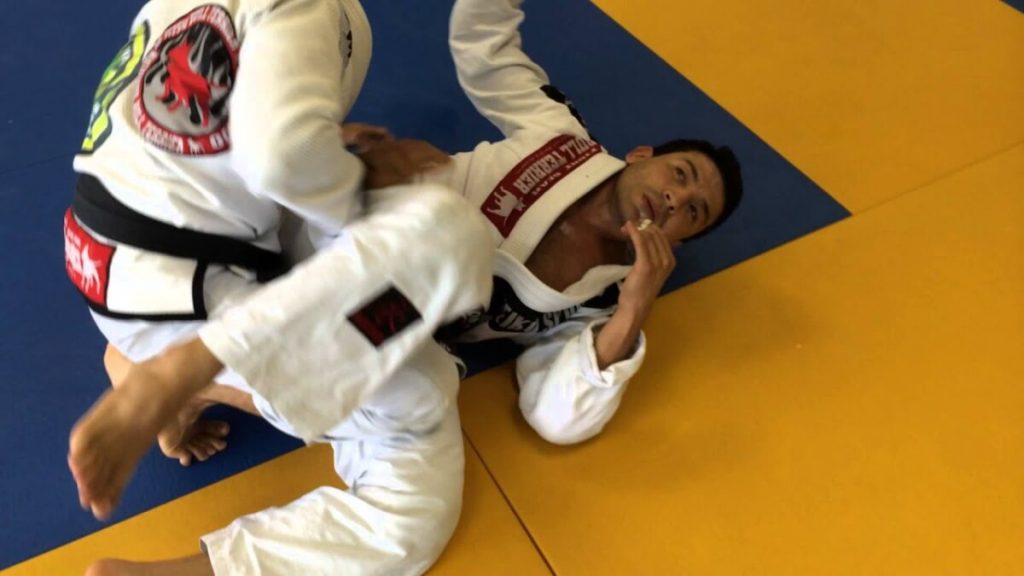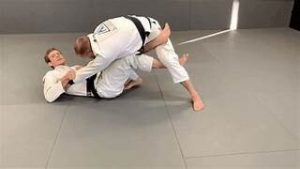De La Riva Sweeps: In Brazilian Jiu-Jitsu, the De La Riva guard is a traditional and extremely beneficial posture that has been utilised for many years. This method, named after the renowned Ricardo De La Riva, is a typical guard you find in schools all over the world. It is known for its adaptability and dynamic sweeping chances.
A few basic sweeps from the De La Riva guard will greatly improve your ability to sweep the opponent over if you are new to the position. This post will examine a number of actions you may take as a De La Riva guard.
The De La Riva Guard
Let’s talk about the fundamentals of the De La Riva guard position before going over some guard techniques. The De La Riva (DLR) guard is an open guard variation in which you take a little angled stance and use your own leg (the De La Riva hook) to control an opponent’s leg. Your hands usually control their sleeves, collar, or foot, and your other leg can press on the other leg. Using kuzushi (off-balancing) tactics, this stance allows you to control your opponent’s balance and mobility and creates an opening for sweeps.
Essentially, the DLR guard is a Gi-only manoeuvre that requires certain gripping techniques to perform. However, in recent years, more and more BJJ competitors have started utilising the De La Riva position in No-Gi matches, although with slight grip modifications. A tried-and-true technique that may be used at any rank, from white to black belt, is the De La Riva guard.
You might also be interested in reading this: What Does BJJ’s Half-Nelson Mean?
Five Eye-Catching Choices From De La Riva Guard

Five essential De La Riva sweeps are demonstrated by Teco Shinzato, a two-time Brazilian Jiu-Jitsu Black Belt World Champion:
The DLR guard’s wrestle-up is the initial tactic. To compel your opponent to post on the mat, use your hook from the De La Riva guard to push them over your head. As they do so, launch a wrestle-up on the opponent by seizing their legs. Perform a knee-tap takedown or a low double to finish the move.
Using the DLR guard seated, use a sweep as the second technique. Use your left leg to push the opponent as you sit up, assuming that you are using your leg to hook against their right leg. Sweep your opponent over with your legs while grabbing their sleeve and collar. Even against larger opponents, this technique may be surprisingly powerful despite its seeming complexity.
The third manoeuvre, which is essentially a wrestle-up variant, goes from the DLR to the sitting guard position. Before you hit, regain equilibrium by grabbing your opponent’s sleeve to keep them from posting on the mat.
The fourth move is a one-leg takedown of the De La Riva guard. Holding onto your opponent’s leg, get into the situp guard position and execute a technical standup. After getting right back up, you can finish the takedown with whatever single-leg finish you choose. For beginners, adopting the “running the pipe” finish can be a wonderful option because it’s quite simple to execute.
The DLR sweep, which employs the upper Gi grip, is the last technique. Take hold of your opponent’s jacket by the back or shoulder to go into the sit-up guard posture. Kick at their leg to finish the sweep once you’ve moved them to the side.
It’s important to note that not every sweep begins and ends in the De La Riva posture. This is a frequent approach in many games, particularly open guard varieties. To ensure smooth transitions, it is advised that you study the situp guard in addition to the DLR guard.
The No-Gi De La Riva Guard’s Control Mechanisms
Since many people have been using the No-Gi De La Riva guard in recent years, we also thought to give a simple introduction to it. BJJ black belt and contender Junny Ocasio discusses his method for using the technique.
He notes that the No-Gi DLR’s initial grips are a little different and that constant stress against the leg is necessary. When he wraps his leg around the opponent, he prefers to position his hips close to their foot. Using both hands to hold the leg and angling the knee to off-balance the opponent is a crucial stage in his version. You may raise your guard even higher by using these management strategies.
Additionally, it will make switching to other guards as necessary easier for you. At present, most novices and intermediate practitioners should be able to master the control mechanics sufficiently.
Additional Advice

As with anything we teach, practising the De La Riva guard requires time and effort. Although this stance has a lot to offer white belts, it is regarded as an intermediate technique. It may be quite subtle, particularly when talking about changes in body weight and grasping transitions.
This makes training the position—from the fundamental entrances to the sweeps—extremely crucial. Practise the posture and methods we covered today as often as you can, ideally with a reliable training partner. After you feel more at ease, evaluate your performance and gradually incorporate them into your game.
In summary
In Brazilian Jiu-Jitsu, the De La Riva guard is an effective weapon that provides a variety of sweeping techniques. For those who are just starting out, these five sweeps offer a strong basis upon which to explore and build their game. Practice these techniques frequently to learn when and how to apply each sweep’s special mechanics and optimal situations. Recall that the secret to perfecting any BJJ technique is constant practice and refining. These De La Riva sweeps may make a wonderful addition to your grappling arsenal with practice and effort.

